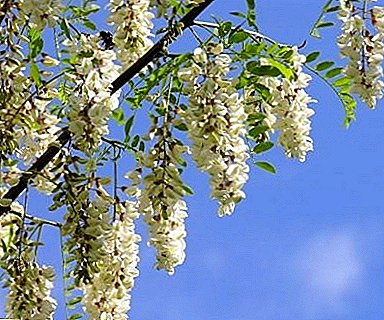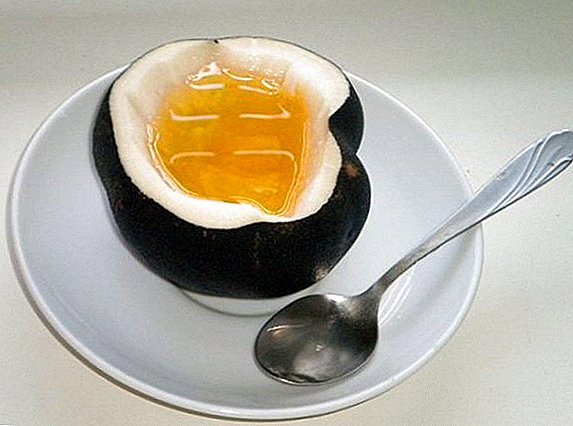
Acacia, or Robinia acacia, is a tall tree of the legume family, which can be distinguished by large long clusters of white flowers.
The aroma during flowering is sweetish, honey, the branches are protected by large thorns, the leaves are ovate. In the autumn, pods are formed with seeds resembling beans or peas.
In many countries, acacia is actively used for the construction and landscaping of cities. For medicinal purposes, almost all parts of this plant are beneficial, which is possible due to the enormous healing potential.
Useful properties of acacia

By chemical composition, white acacia boasts the presence of vitamins A and C in young shoots and leaves, essential oils in flowers.
It is also rich in organic acids and sugars. A large number of flavonoids, pectins, fatty oils and tannins are found in wood, young stems and foliage.
Vitamin A and C actively participate in maintaining strong immunity, improve eyesight and help in the fight against loss of mood, depression. Flavonoid robinin promotes recovery from bladder and kidney diseases.
Acacia Honey It is known that it can be stored for a long time without crystallizing, it has a soft, delicate aroma and is extremely transparent. White acacia honey plant gives a light variety of this honey, whose taste is thinner than yellow. A rare variety of acacia honey is useful for sore throat and bronchitis, cystitis, relieves inflammation in conjunctivitis. In the form of ointment and lotions helps against psoriasis, eczema and neurodermatitis, fights against premature aging of the skin.
Invaluable honey for the elderly, because it stimulates blood formation and dilates the walls of blood vessels. Against the development of edema and cellulite take hot baths with honey. Honey baths are often prescribed during the peeling of the skin, brittle hair, to strengthen hair and improve the condition of the nails.
Sedation can be greatly enhanced if you use honey in combination with cottage cheese or milk.
Indications for use

The spectrum of use of acacia in the treatment is quite wide. Acacia-based preparations are applicable as antipyretic, antispasmodic and diuretic agents. There are expectorant drugs, laxatives and choleretic.
Medical preparations and simple decoctions are advised when cold, flu, high blood pressure, rheumatism and gastrointestinal diseases. Also, the substances contained in acacia are effective in combating kidney stones and urolithiasis, osteochondrosis, myositis.
During the exacerbation of women's ailments, severe gastritis or gastric ulcer, as well as pyelonephritis, acacia has a softening effect, and in some cases can serve as post-stroke prophylaxis. Due to the special properties of the bark, it is possible to reduce the acidity of the stomach to optimal performance.
No need to resort to self-treatment, without consulting an expert in this field. Violating the proportions and dosages, you risk getting serious poisoning.
The effect of such a compound in the composition of acacia, as the alkaloid robinin, will be a sharp pain in the abdomen, diarrhea and nausea, migraine, general weakness and cardiovascular failure.
Contraindications Acacia
In such parts of the tree, like seeds, bark and roots, the concentration of toxic substances is quite high, their use for medical purposes is associated with the risk of overdose.
Toxalbuminrobin, which is abundant in the composition of tree bark, can lead to severe irritation of the mucous membranes. Do not abuse drugs from acacia people with low blood pressure and low acidity of gastric juice.
The use of decoctions and acacia tinctures is extremely undesirable for pregnant women, especially during lactation.
Side effects

Possible allergic reactions with individual intolerance Some components of preparations from acacia. In rare cases, acacia treatment may be accompanied by drowsiness, low blood pressure.
Acacia gum what is it? What parts of the plant are used?
In folk medicine, both acacia leaves, bark, roots, stems, pods, and flowers have found their use. Of particular value is acacia honey and essential oil.
Flowers White acacia in the form of decoction has an anti-inflammatory effect in the development of a benign tumor of the uterus myometrium and other diseases of the female reproductive system. It is recommended decoction of dried flowers with elevated pressure, and the infusion is useful in the treatment of diseases of the bladder and kidneys. Alcohol tincture is almost indispensable for relieving joint pain, varicose veins, or radiculitis.
Leaves can be brewed for decoction against coughing and for lowering the temperature during severe colds. Broths in some cases are advised in case of respiratory diseases, for example whooping cough in children.
Extract of the leaves is prescribed as rubbing for severe bruises, salt deposits, gout and rheumatism, as well as thrombophlebitis.
Gum (gum arabic) well softens and moisturizes the skin, helps in the healing of burns and cuts, stops inflammation, relieves pain and normalizes cholesterol metabolism. Gum also helps to restore digestive processes and helps in the treatment of obesity.
Resin stocks (fibrega) has a knitting effect, copes with excessive skin irritation, eliminates dryness and oily shine, smoothes the skin of the face.
Acacia Pods in the form of tea broth is often used with a strong cough.
White acacia manifested itself as a versatile medicinal tree, almost all parts of which are beneficial. Depending on the concentration of substances, leaves, bark, flowers or roots are used to make cosmetic or medical preparations.
It is important to observe the permissible proportions and strictly follow the recipes in order not to disturb the ratio of ingredients and to prevent poisoning. Properly prepared decoction, tincture or ointment effectively help with various diseases relieve inflammation, pain, return the body tone.












